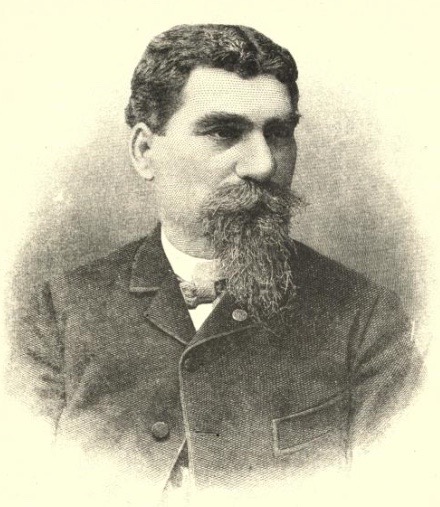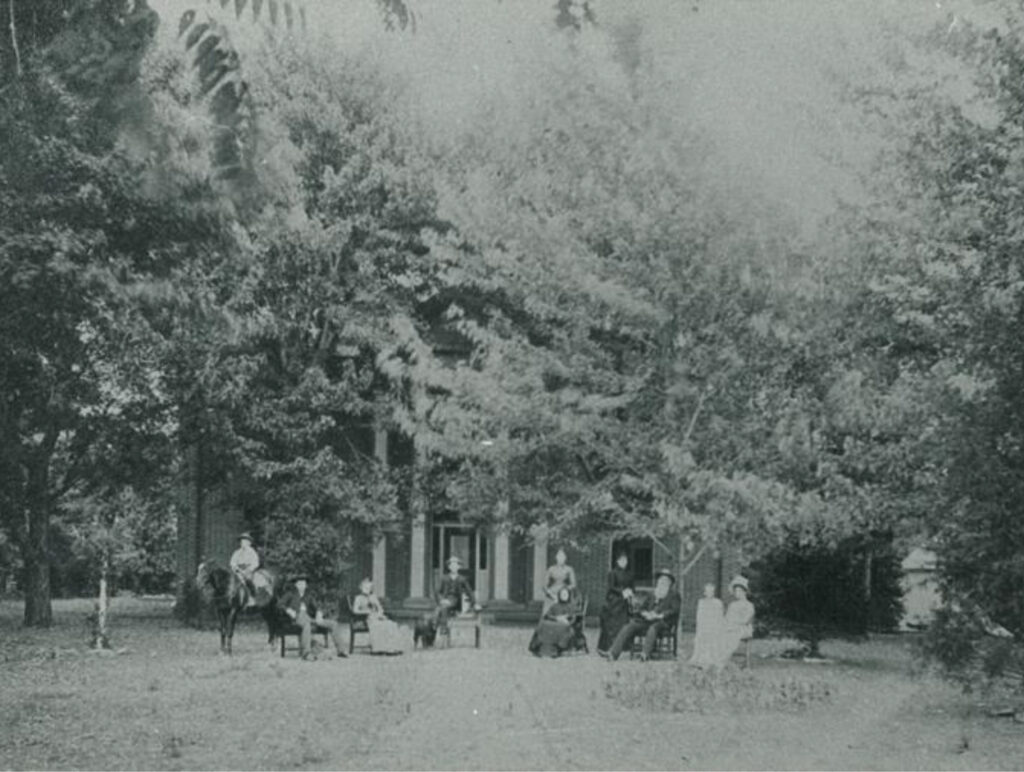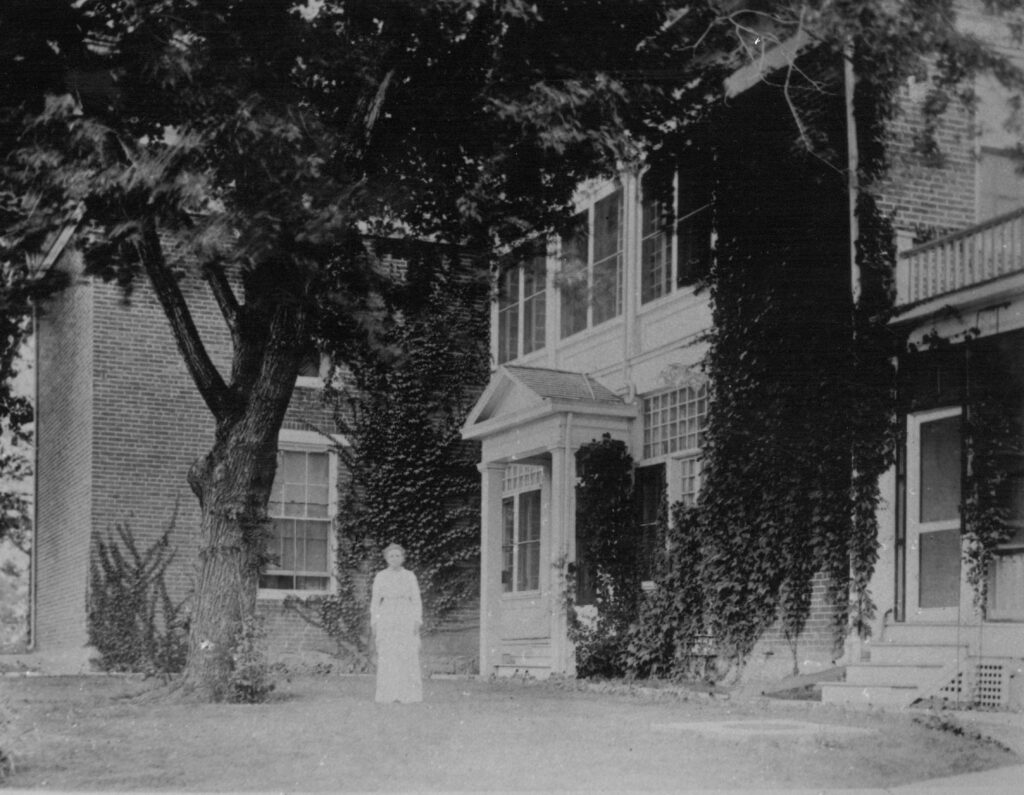
When I came to him, Mr. Wornall was living in a comfortable frame house, but soon determined to build a two-story brick mansion which would be the most pretentious of anything in that section.
– Wiley Briton, farmhand at Wornall farm (1923)
The John Wornall House is one of the few surviving houses in the Kansas City area built prior to the Civil War, one of the oldest residences of Greek Revival design in Kansas City, and is on the National Register of Historic Places. Built in 1858 as part of a 500-acre farmstead, the Wornall House was purposefully built in a prominent location overlooking Wornall Road – then known simply as “the road to New Santa Fe”.
The Wornall family purchased their land in 1843 after migrating from Kentucky. Originally, they lived in a four-room log cabin located 200 feet west of the Wornall House. John Wornall made his fortune through farming – he sold his goods into the town of Westport, a booming and lively town that served travelers moving westward on the trail system.
The Wornall property would have spanned north-south from modern-day 59th to 67th streets, and east-west from Main Street to State Line Road. The house faces west, looking out over Wornall Road (named after the house) and symbolically, the frontier.
The Greek Revival style of the Wornall House closely mirrors designs that John would have been familiar with in his home state of Kentucky. The two-story central hall layout, prominent columns, and solid brick construction are all familiar hallmarks of this style.
The architect of the home is unknown, and Kansas City at the time had a few academically trained architects. But John, as was typical, acted as his own contractor for the construction of the house. The brick for the Wornall House was fired onsite 50 feet east of the present building. Mortar was made from sand hauled from the Missouri River. The limestone for the foundation, fireplaces, and door and window lintels was quarried nearby. Other materials arrived from St. Louis to complete the home.
John may have hired enslaved bricklayers to build his home. Many enslaved men were trained in highly valuable trades such as bricklaying and blacksmithing. These individuals were then “hired out” by their owners for fixed periods of time or for specific projects. Missouri newspapers of the time show that bricklaying was a common skill advertised by slave owners. All income from “hiring out” went to the owner, and enslaved people rarely saw any financial gain from their work.
The Wornall House has undergone two major renovations since it was built in 1858. The first was in 1910 when John’s widow Roma made the home more comfortable for twentieth-century living by adding utilities and additional doors and porches. The second was in 1967 when the house was renovated by the Jackson County Historical Society in anticipation of the home becoming a museum.


